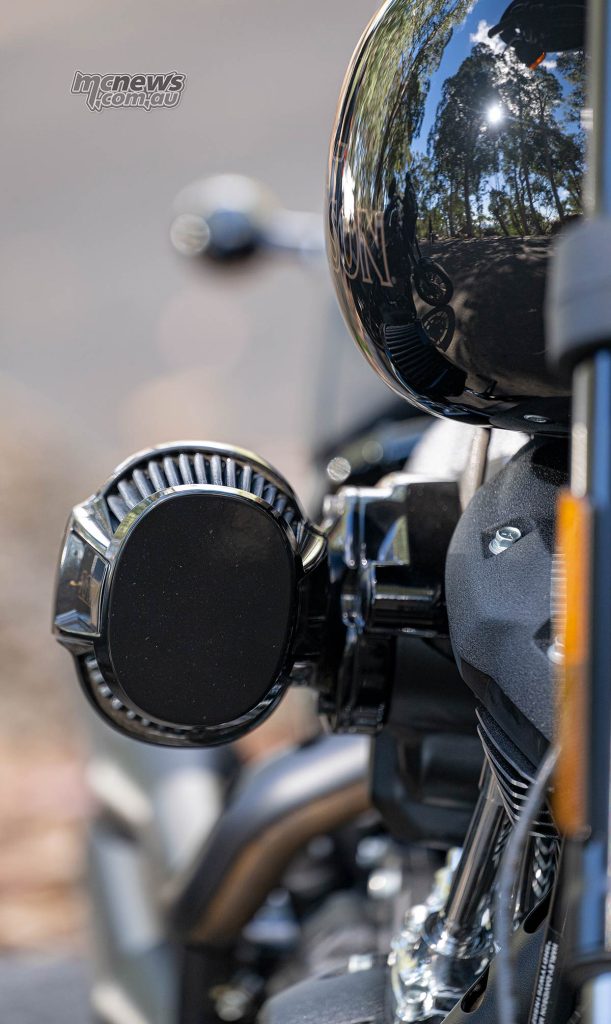Harley-Davidson Low Rider S Review
2022 Harley Lower Rider S review by Trevor Hedge
Once a staple of the now defunct Dyna line-up, the Low Rider S came to the Softail platform in 2020 and for 2022 Harley-Davidson gave it a significant refresh to make it grunt harder and handle better.
The big changes are the fitment of the big daddy Milwaukee-Eight 117 V-Twin that produces 167 Nm of torque at 3500 rpm. This 1923 cc mill is magnificent. That’s not something only applicable to this model though, all Milwaukee-Eight engines are gems.
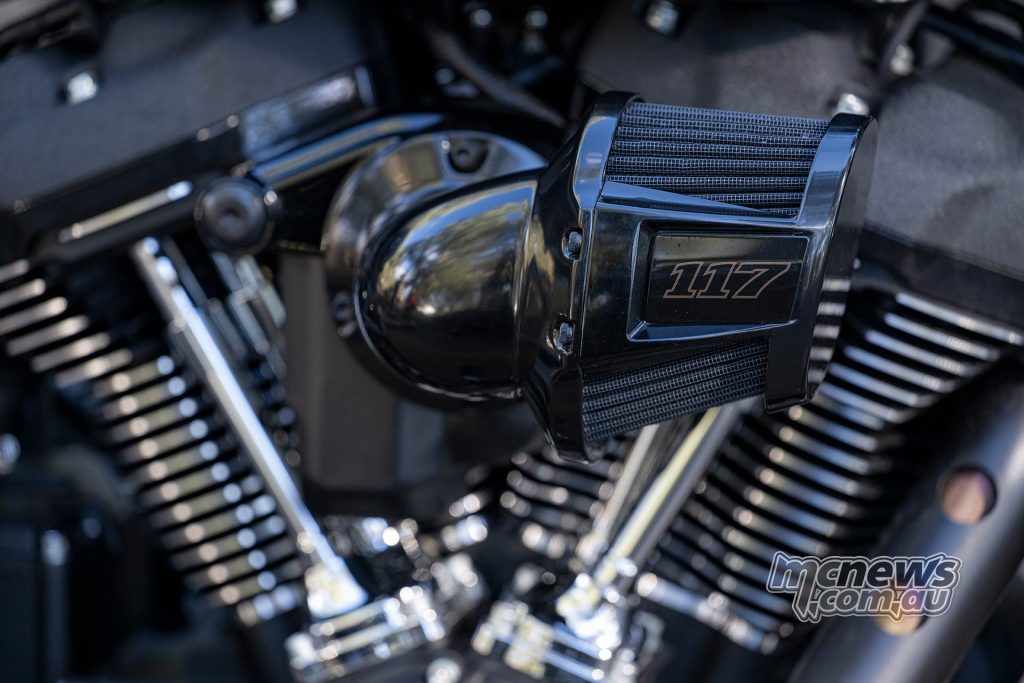
While I could never admit to any real admiration for an EVO era engine, I certainly warmed to the later Twin-Cam 96 donks when they were introduced 15 years ago. Then when the Milwaukee-Eight engines came on line five years ago, I was pretty much smitten.
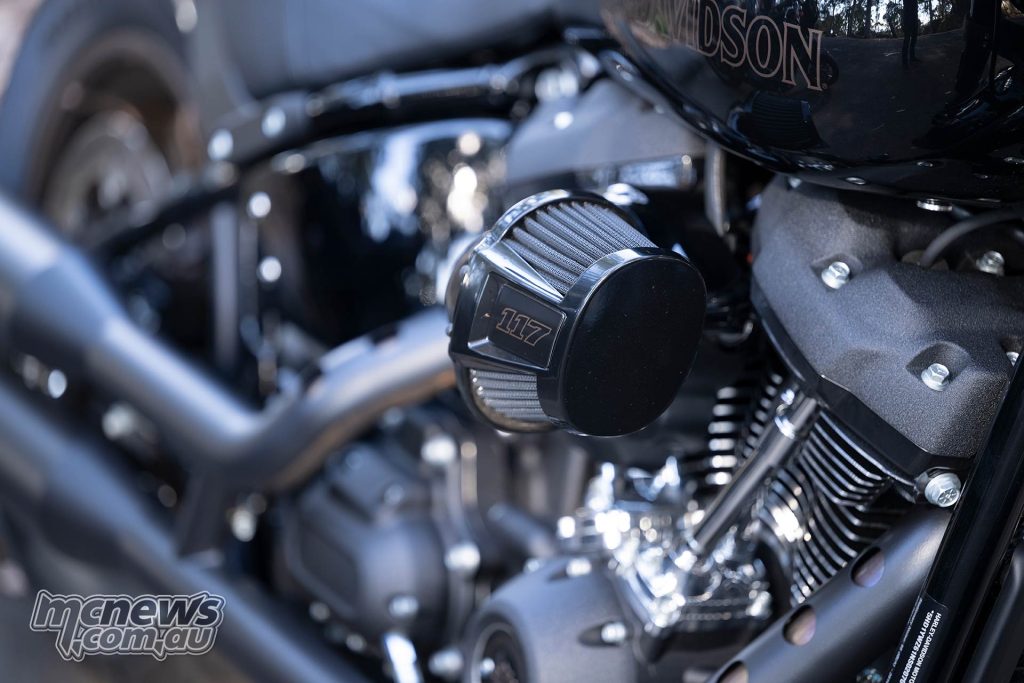
‘Fit for purpose’ is the phrase that springs to mind as Harley’s are made for cruising and this super smooth engine hits that bullseye. With 168 Nm of torque at a low 3500 rpm it certainly pulls hard enough when the mood changes from cruising to bruising.
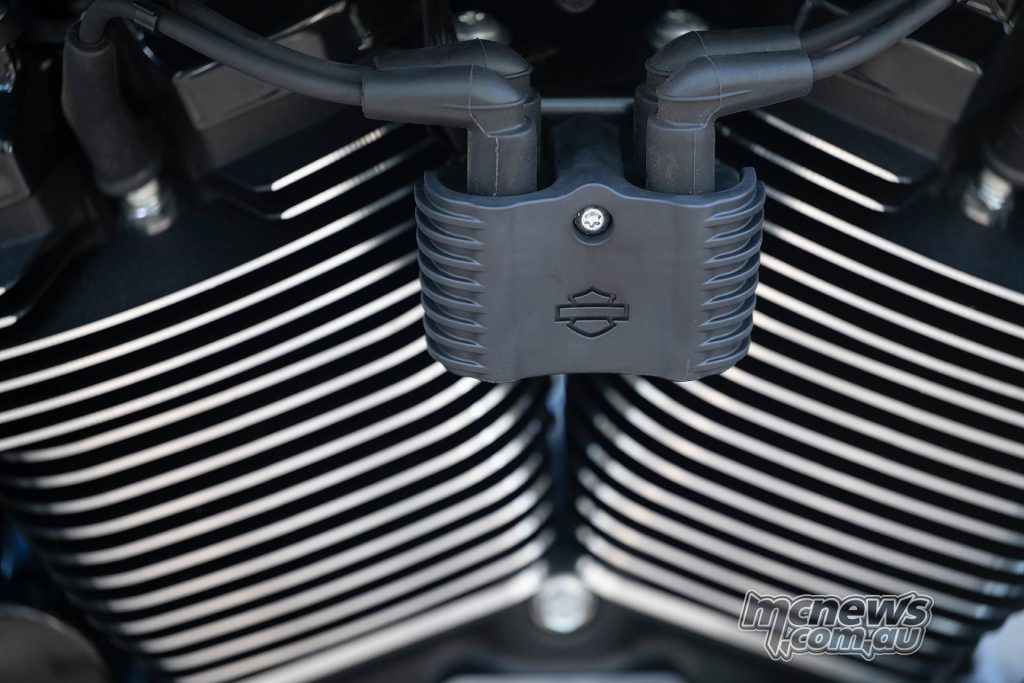
Even when spinning those 103.5 mm pistons at 5000 rpm through a long 114.3 mm stroke the engine remains smooth, unstrained and unflustered. It is around those revs that the 117 makes it claimed maximum of 105 horsepower.
It wasn’t that long go you would be up in to 50k+ CVO territory before you got the big motor, so while prices have risen on most Harley-Davidson models over the last couple of years, at least they are throwing more berries into the bargain. However, whilst some motorcycle brands have pushed their warranty out to three years for Australian customers, Harley at this stage remain at two years.
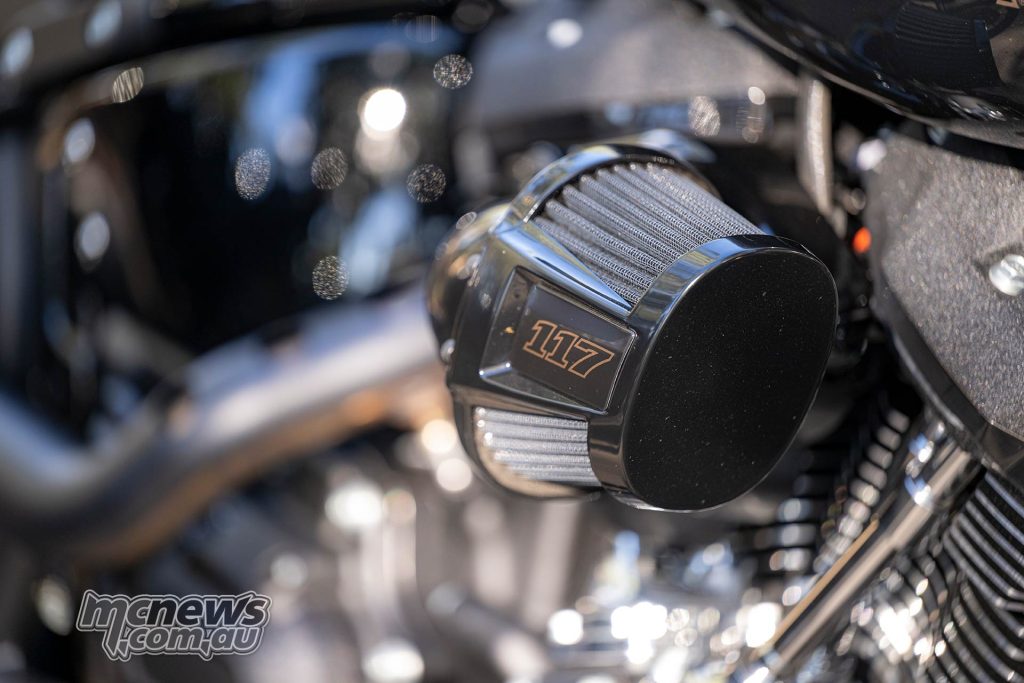
washable exposed element is standard.
Service intervals also come around more often, with Harley pegging them at 8000 kilometres, while most of the industry are now out to 15,000 kilometres. That said, I would never go 15,000 kilometres between oil changes on any motorcycle thus I think Harley’s service intervals are more realistic, especially if you plan on keeping your motorcycle for a long time. The fact that thanks to its hydraulic lifters no valve adjustments are required should also help contain long-term servicing costs.
In the Low Rider S the big mill is mainly blacked out, save for the chrome push rod tubes and polished edges of the cooling fins. Other than that the whole bike is pretty much black, black and more black.
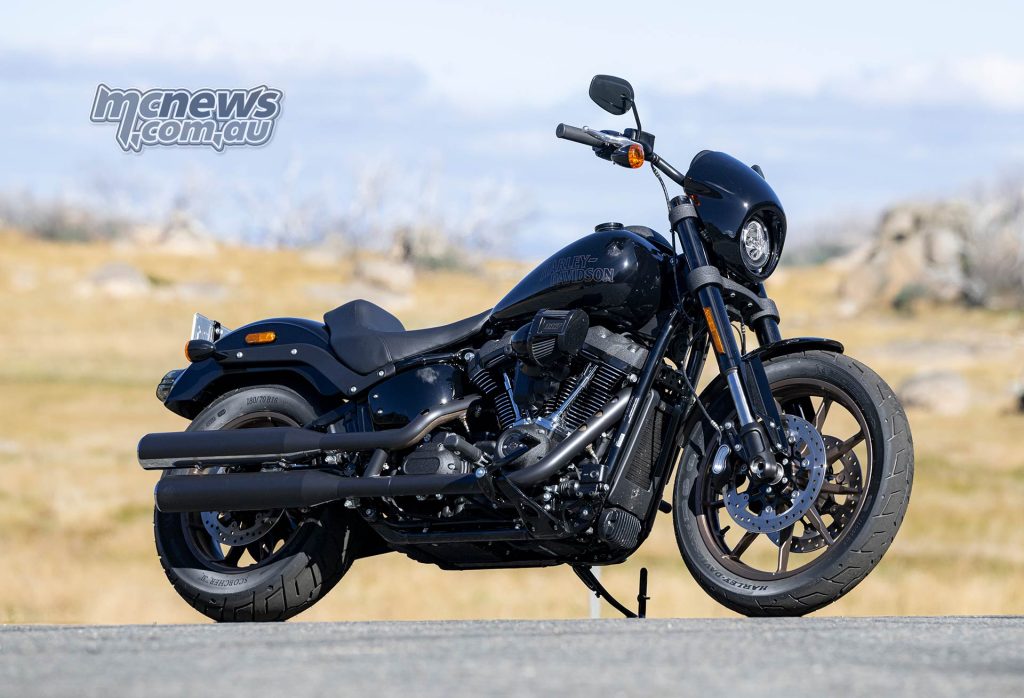
The ‘Heavy Breather’ intake adds a touch of the custom look straight from the factory but the bike would certainly improve both in audio and aesthetics with a nice exhaust. I really can’t get over the quality of the end caps on the mufflers, they look like something you would find on a Chinese pit bike, and are a blight on an otherwise premium finished bike.
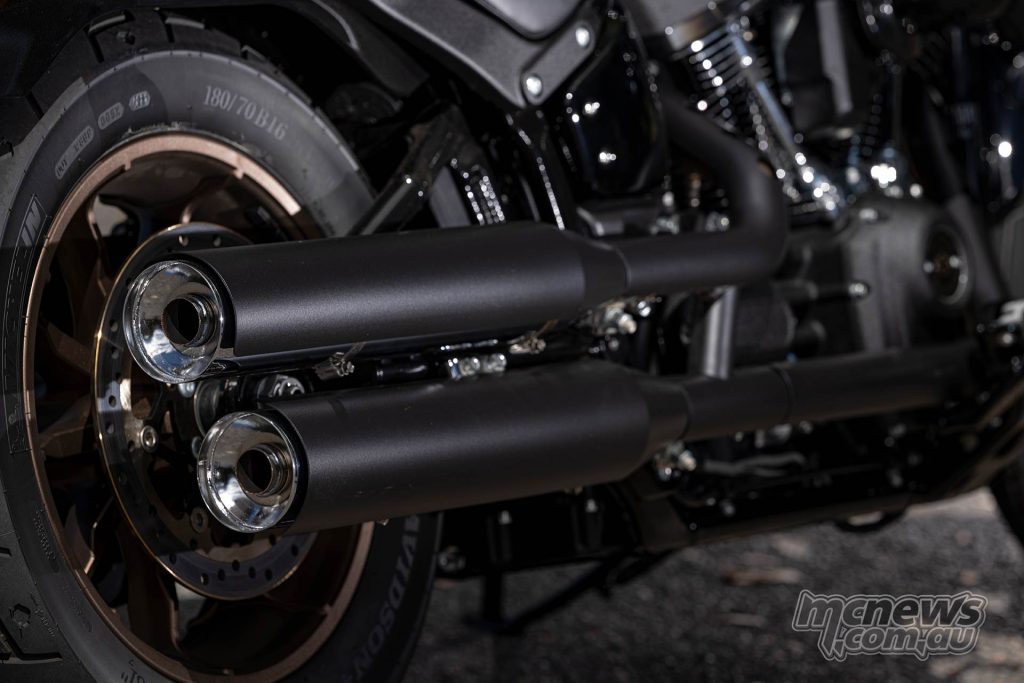
From the riders perch you can’t see any wiring, and the clutch cable and brake line is routed neatly and well out of the way. You appreciate this while riding the bike and it helps to make it feel a bit special. My riding was mainly done on cold autumn days but I certainly didn’t pick up any undue heat issues from the engine. That might be different if riding in the city on a hot summer’s day.
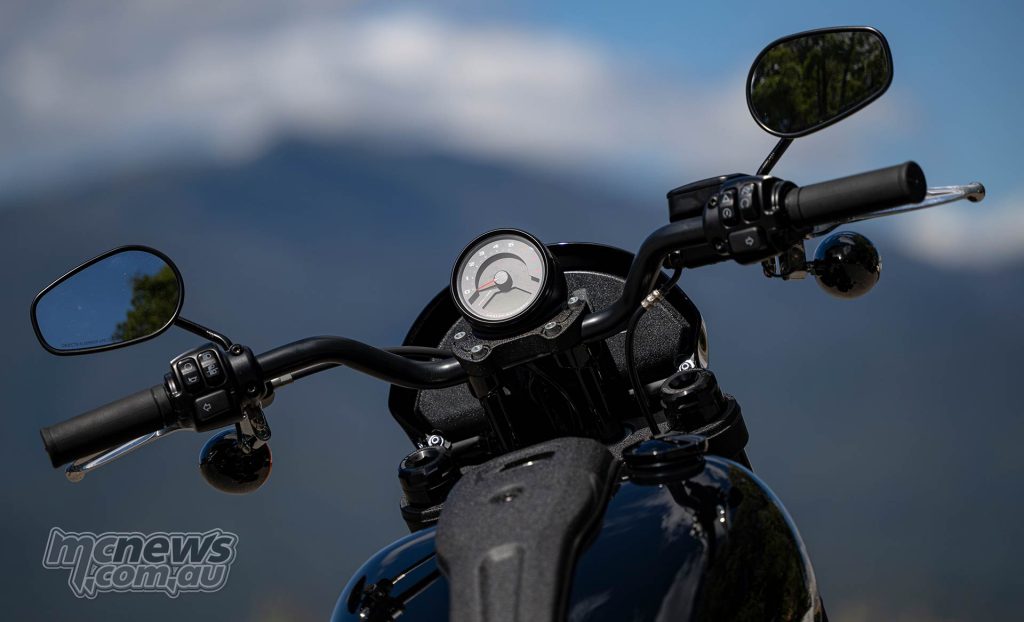
The power delivery is best described as effortless. You can get to 100 km/h pretty quickly without passing 3000 rpm in any gear. At 100 km/h the big crank is turning a leisurely 2200 rpm. Slowing down for a 60 km/h zone doesn’t require a downshift, the Low Rider will stroll right through at 1400 rpm without a complaint, then still pull that top gear strongly when asked to accelerate out the other side.
Swapping cogs was a fairly fuss free affair. The first couple of shifts from the line benefit from a bit of clutch but it works well enough to clutch-less shift the upper gears, as long as you just back off the throttle a little to allow the near ratio to slot home. The transmission is called Cruise Drive by Harley-Davidson, and that moniker is fitting.
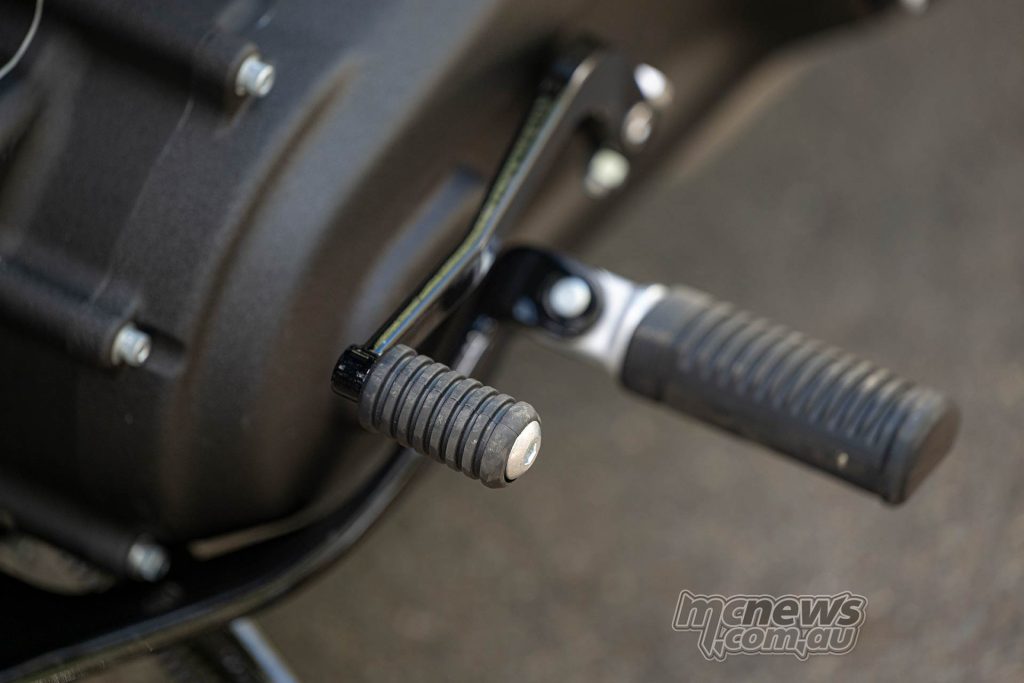
I don’t think I once found an instance where I needed to go anywhere near that 5000 rpm power peak, certainly not once past the first couple of gears. If you start revving it that hard in the upper gears then you are going pretty quick, and getting your arms stretched in the process as all your upper body pushes through the air and your arms seem to get longer in order to hang on to the bars.
At general highway speeds wind-blast is not an issue, and while at higher speeds the air resistance was definitely felt on the upper body, I am glad to report that I experienced zero buffeting. The mirrors are vibe free but you have to be blessed with a pretty narrow shoulder span for them to be useful without having to move an arm or your head to try and get a reasonable view behind.
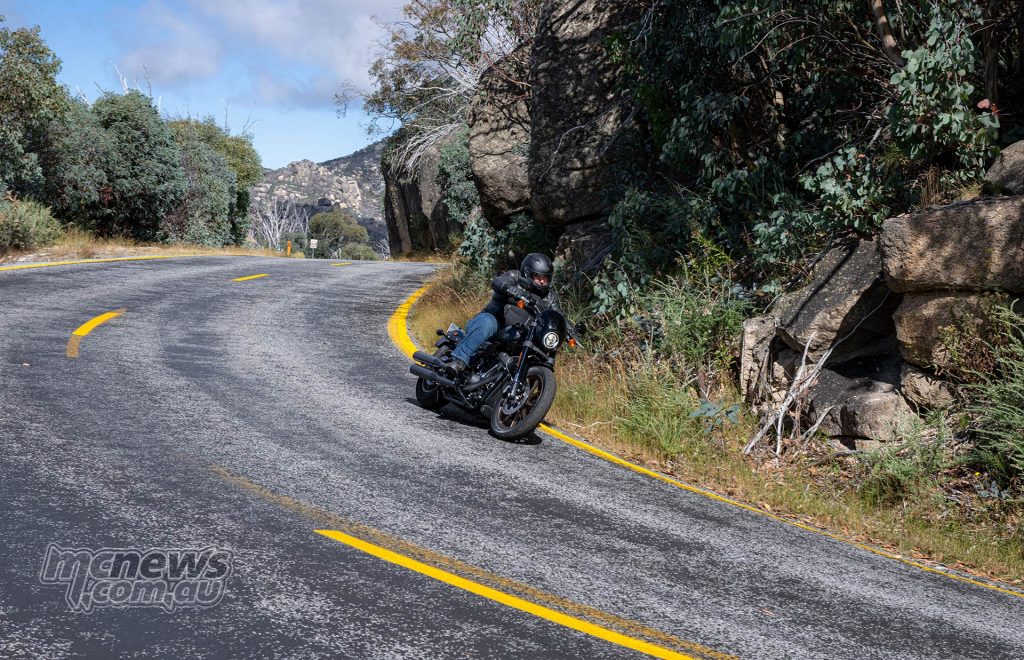
A change for the 2022 model year sees the Low Rider S get the longer rear shock, first seen in the Fat Bob a couple of years ago, which helps boost cornering clearance and ride comfort. Big hits can still be felt and it doesn’t take too much aggression to start scraping things. It is what it is, and you ride to those 31-degree lean angle limitations. These limitations are not at all concerning to most Harley-Davidson customers. If they wanted something more sporting they can afford it, but they don’t.
Australians love Harley-Davidson’s, so much so that the brand often shifts more road bikes than any other company. Twice as many as BMW, three-times the sales volume of Ducati, and six-times as many bikes as their American rivals over at Indian. Doing something right then…
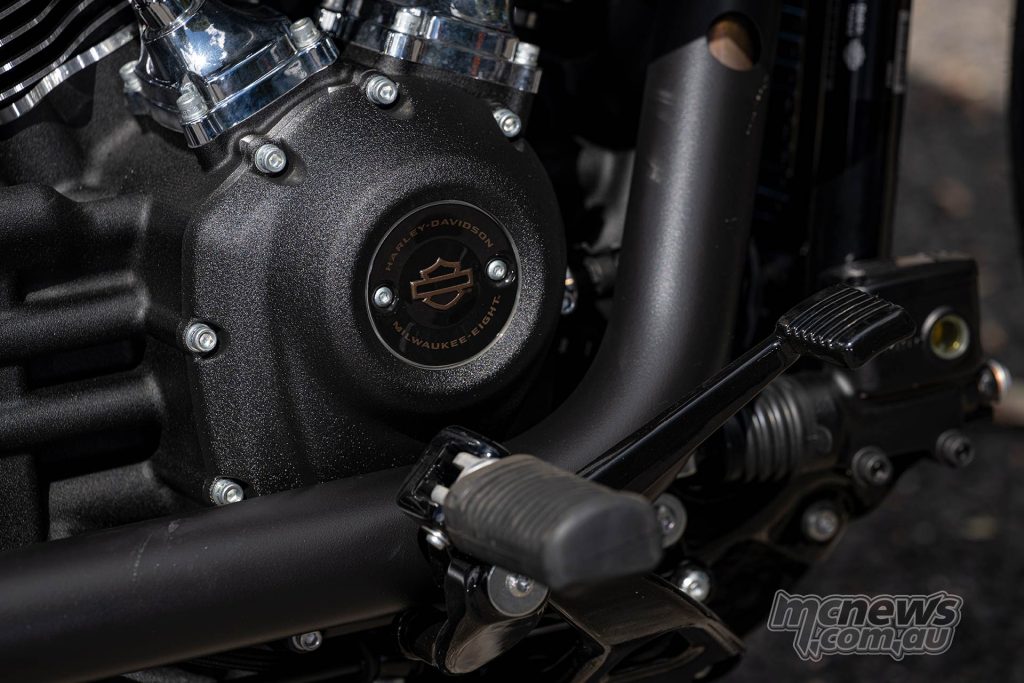
The cornering limitations are themselves fun to play with. I often enjoy the challenge of trying to run decent corner speeds without touching anything down. Some see the trailing sparks as fun, I don’t really see something so unchallenging as that any source of real entertainment. Railing a perfect line and using some body attitude to maintain pace, while seeing any touch down as a source of failure on my part, I find a much more satisfying game to play. And the improved ground clearance for 2022 certainly makes that game easier. So much so that I can imagine there will be plenty of owners that never touch a peg down during their time with the bike and love every minute of it.
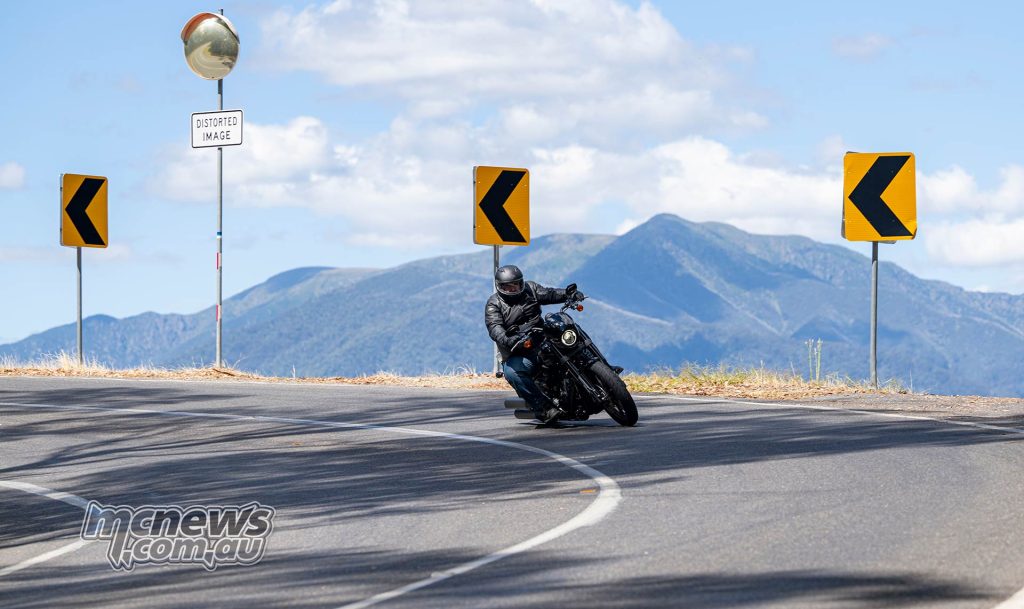
The relatively skinny 110/90-19 front hoop combines with a 180/70-16 rear and somehow they make that marriage of difference work well enough. The bronze coloured rims look trick but the amount of wheel-weights required to make the rear balanced on what was a new tyre/rim combination on our test bike looked to be a lot more than should be required.
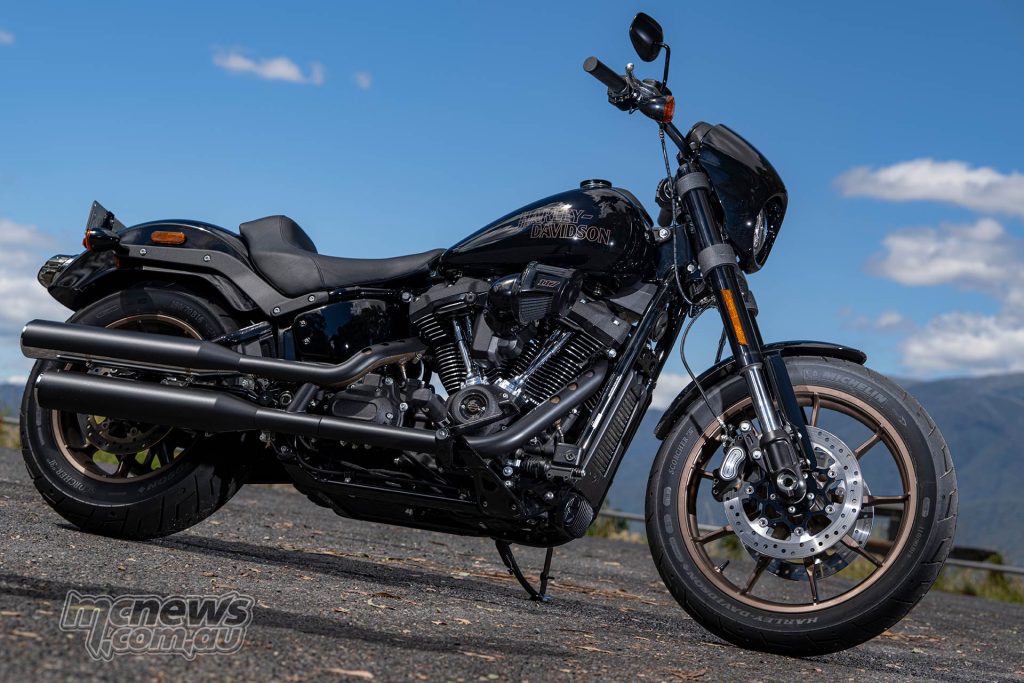
The mid-mount peg placement when combined with the low seat on the Low Rider is not something I managed to gel with. I’m not much of a fan of forward controls either, at least the mid-mount pegs on the Low Rider do at least give you the opportunity to move around the bike and be active on it when corner carving, unlike being stuck in the one position that forward controls generally force you in to. But the peg position still feels completely unnatural to me and I am not a fan.
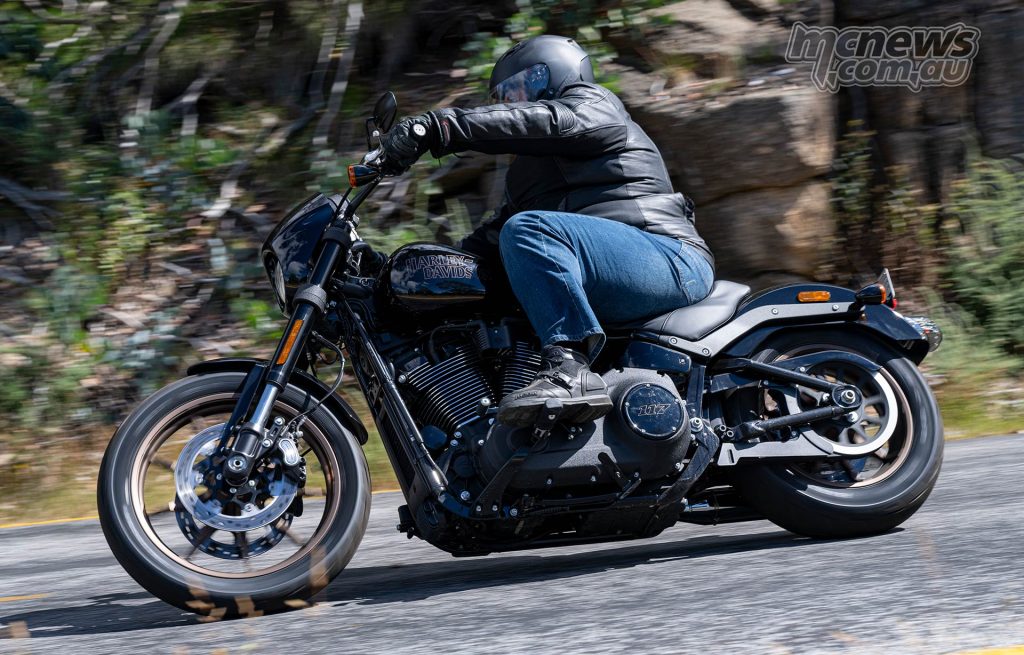
Harley remind me of the designers of the warships I once served on. They would work out every design aspect of the ship when it came to where they could pack as much fuel and as many missiles/shells/torpedoes as they could, then at the last minute give some thought as to where the crew would get poked in to the nooks and crannies left over. Except in Harley’s case, at least on the non Touring platform bikes, it is all about the look and the stance, then they seem to worry about the ergonomics last.
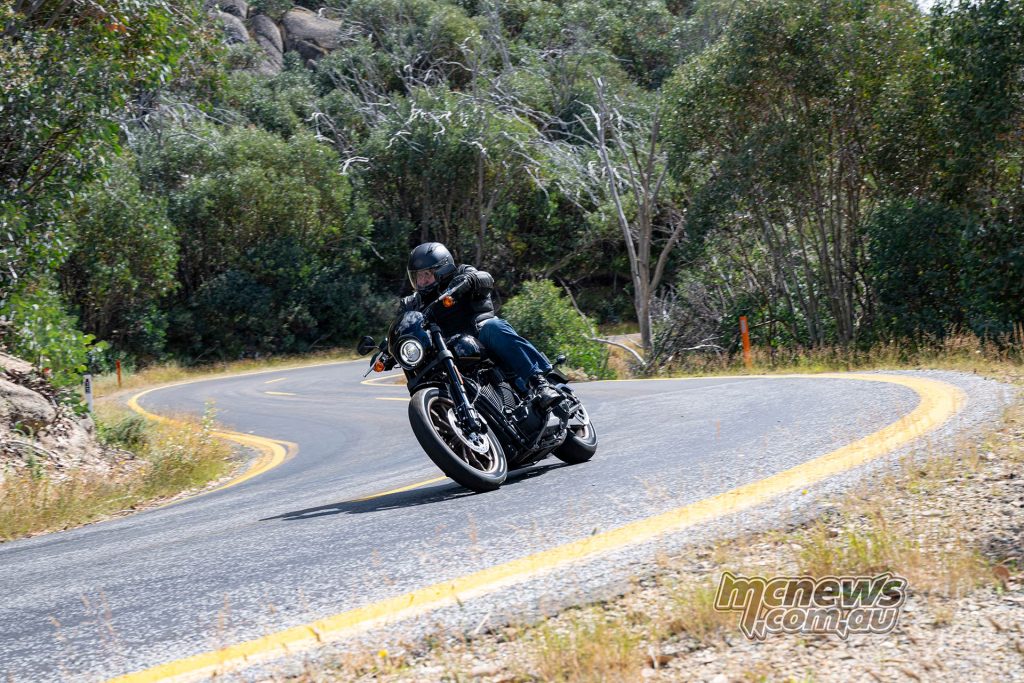
While I couldn’t adapt to the peg and mid-mount foot control positioning, the rest of the ergonomics are fairly natural. The seat is well shaped, securely located the rider and is adequately padded. The reach to the drag style bars becomes natural fairly quickly, and the switch-gear works well enough, once you get used to having indicator buttons on both sides of the bars.
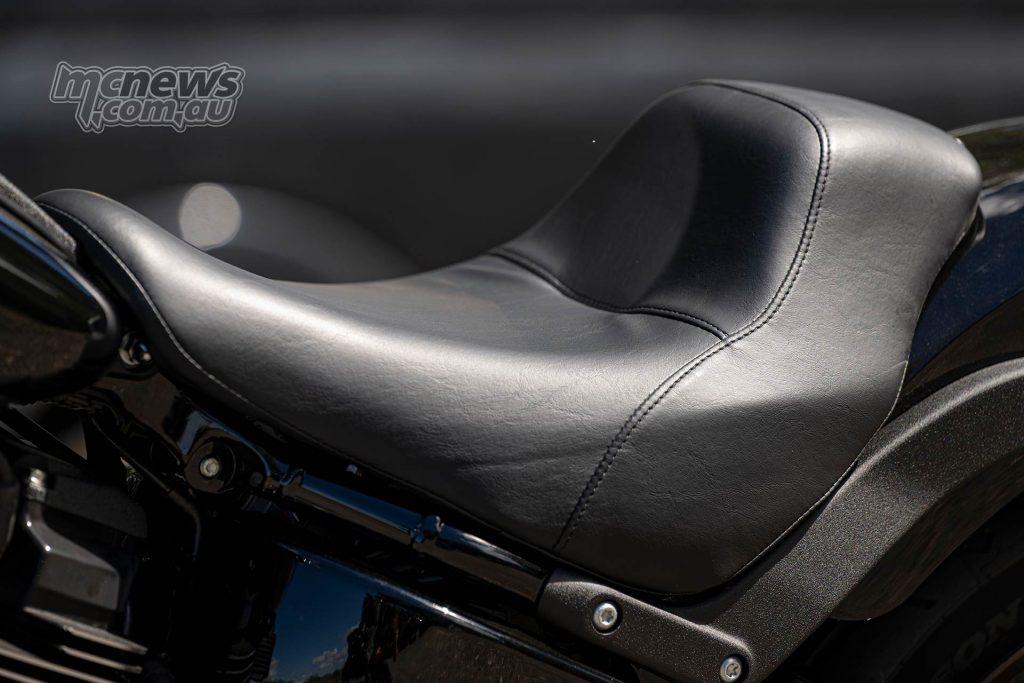
The lack of reach adjustment on the levers I did find annoying. The clutch itself is surprisingly light and smooth enough but I did fail to get a good feel for the friction point. The front brake offered good feel right up to the point of ABS engagement. The ABS system is a generation or two behind the latest and greatest on offer from IMU equipped bikes, but is still light years ahead of early systems and works well enough from a safety standpoint. There is no traction control on the Low Rider.
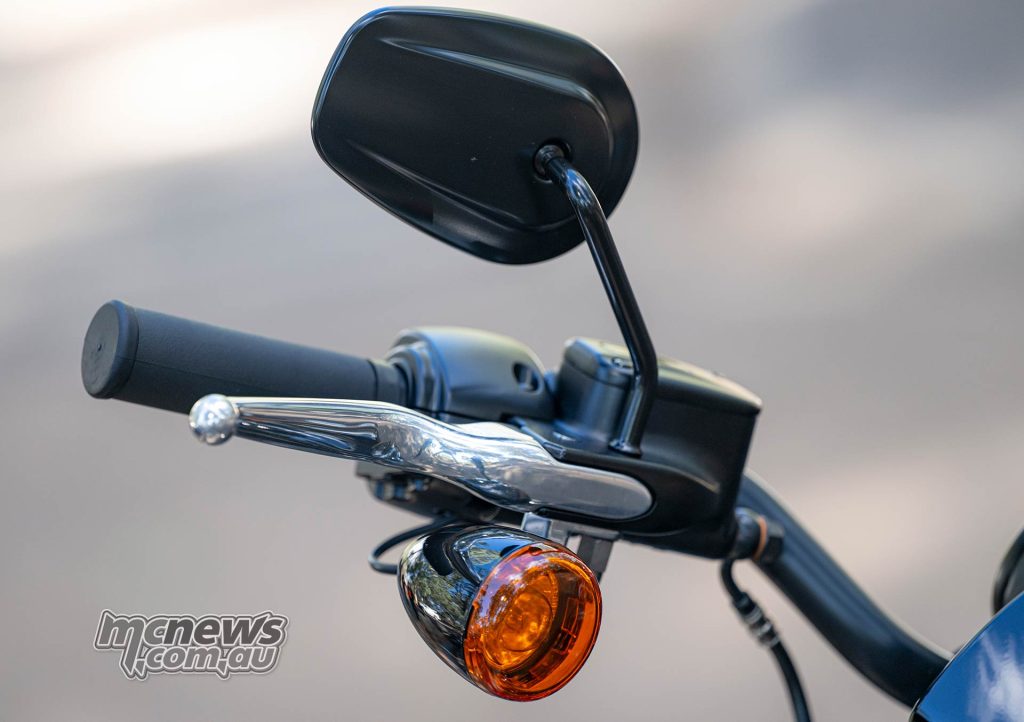
A pair of 300 mm discs and four-piston calipers up front are backed up by a 292 mm disc and twin-piston caliper at the rear. The forks can start to protest a little if you really throw out all the anchors, but that’s par for the course in this category. There is no lack of braking performance and due to the long low stance of the bike I think many riders would probably pull up quicker on the 308 kg (wet) Low Rider S than they would on plenty of bikes 100 kg lighter. It just squats down and stops without fuss.
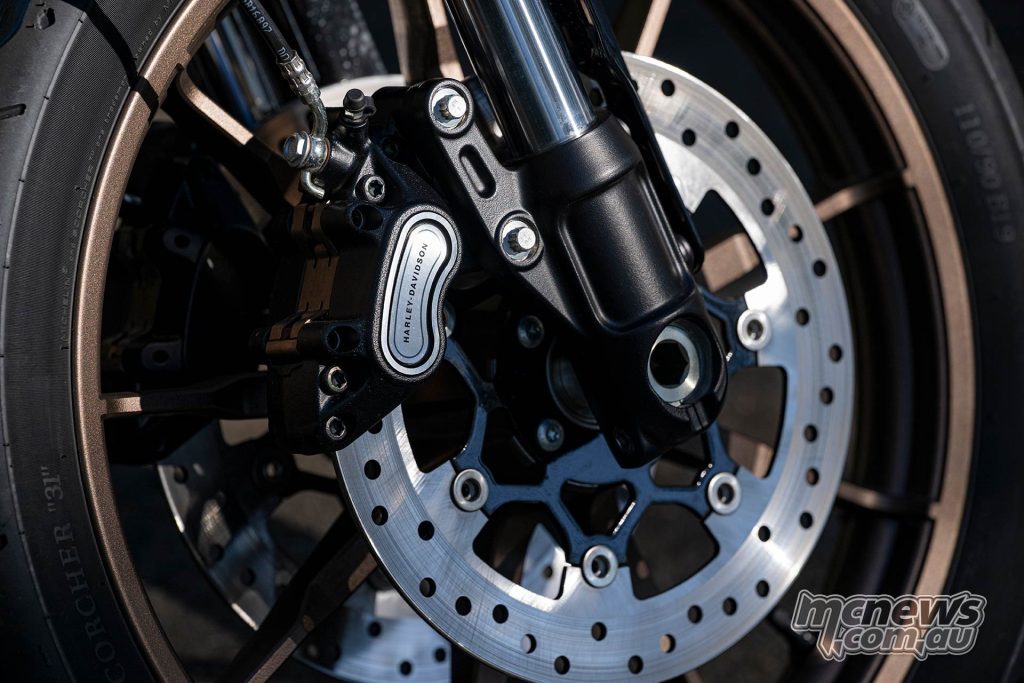
With 130 mm of front suspension travel and a very generous, by Harley standards, 112 mm of rear suspension travel makes the Low Rider S one of the sweetest riding bikes Milwaukee makes. It handles the bumps so much better than most of the Harley Cruiser model line-up. It could still be better, but it sure is far superior to many of the other models in the range.
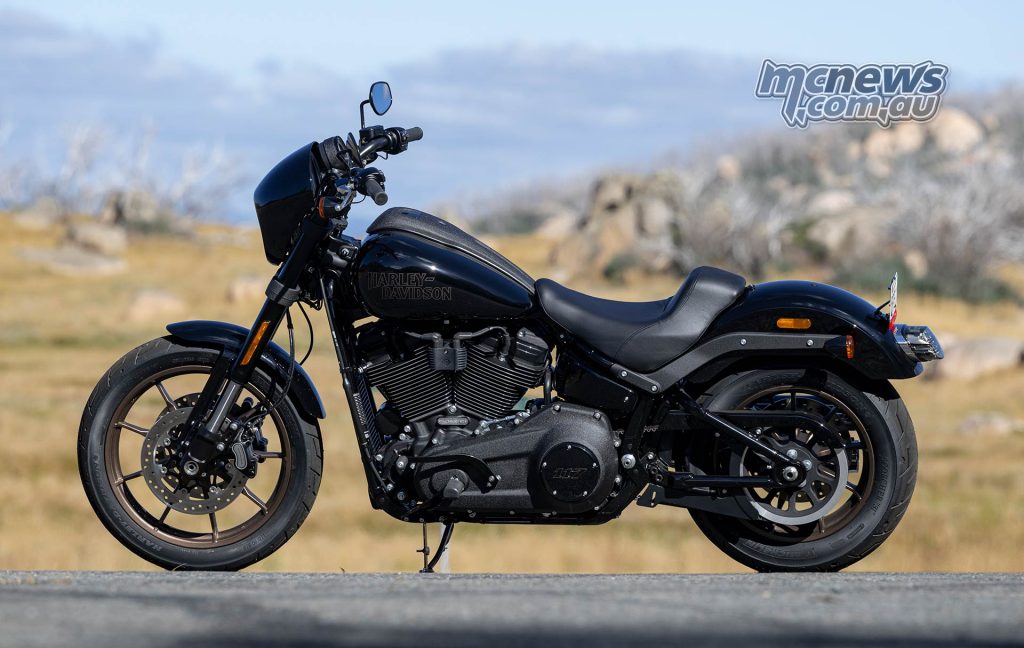
Instrumentation consists of a single bar mounted conventional tachometer with an LCD inset that shows speed and fuel level while other functionality can be cycled through easily via a bar mounted button. The LCD inset is fairly small but I think that probably fits with the overall vibe of the bike. It looks good at a glance and does actually give you the critical information you need.
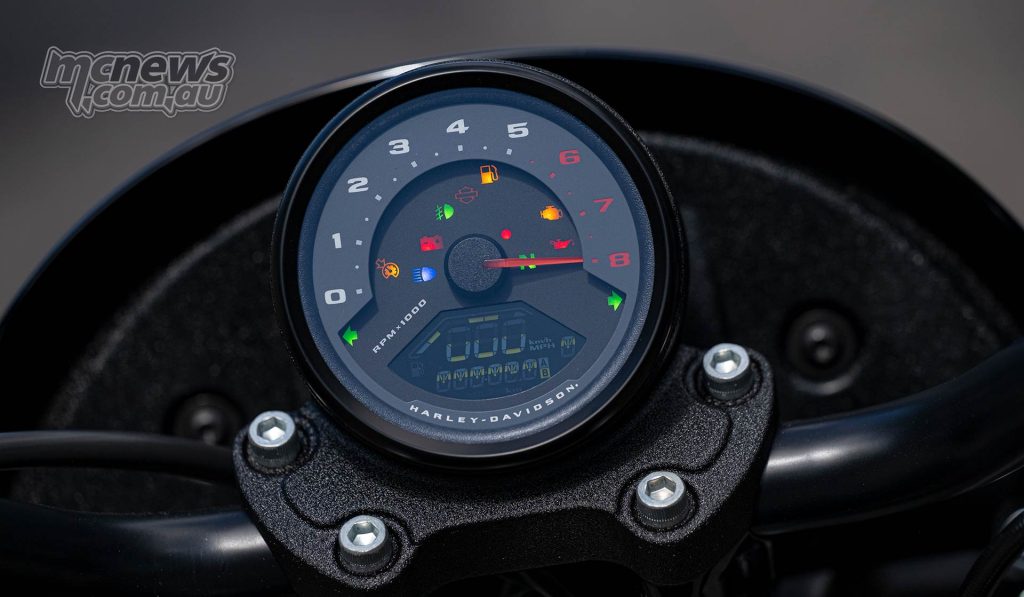
I am not going to try and colour your judgement in regards to the styling, I will leave you to make your own opinions. In the flesh though I can say, apart from those end caps on the mufflers, it does exude a certain quality feel while keeping a traditional look that if just presented with the silhouette, many would struggle to guess as to which era the bike belongs to.
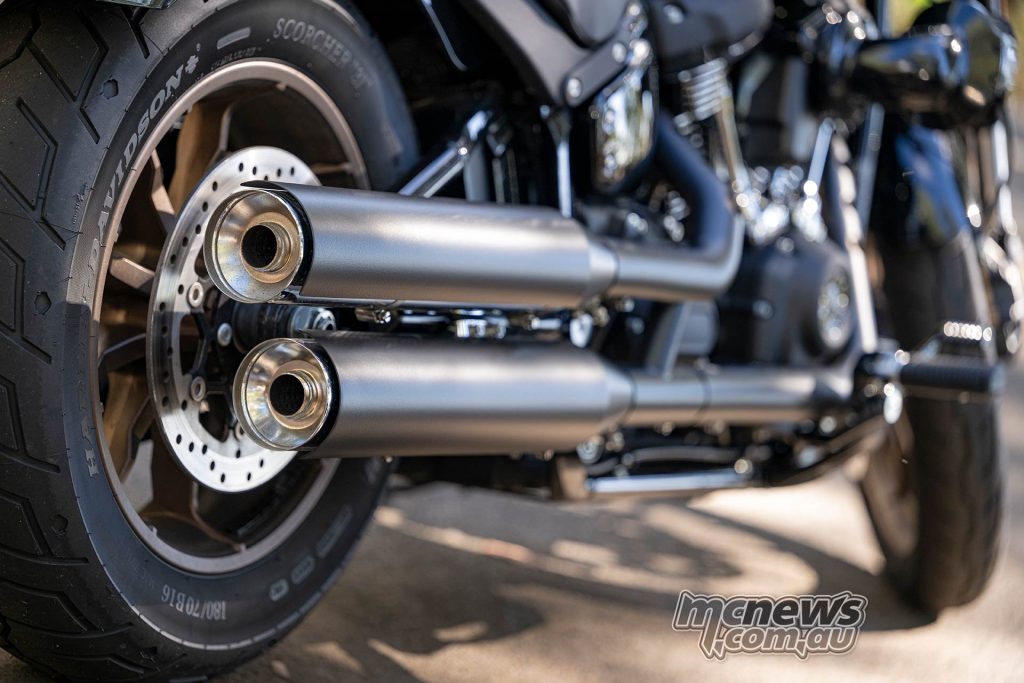
The 2022 Low Rider S would not have looked completely out of place in the 80s. Headlight cowl aside, it otherwise looks very much like the original Low Rider introduced 45 years ago, when it became Harley’s biggest selling model in 1977.
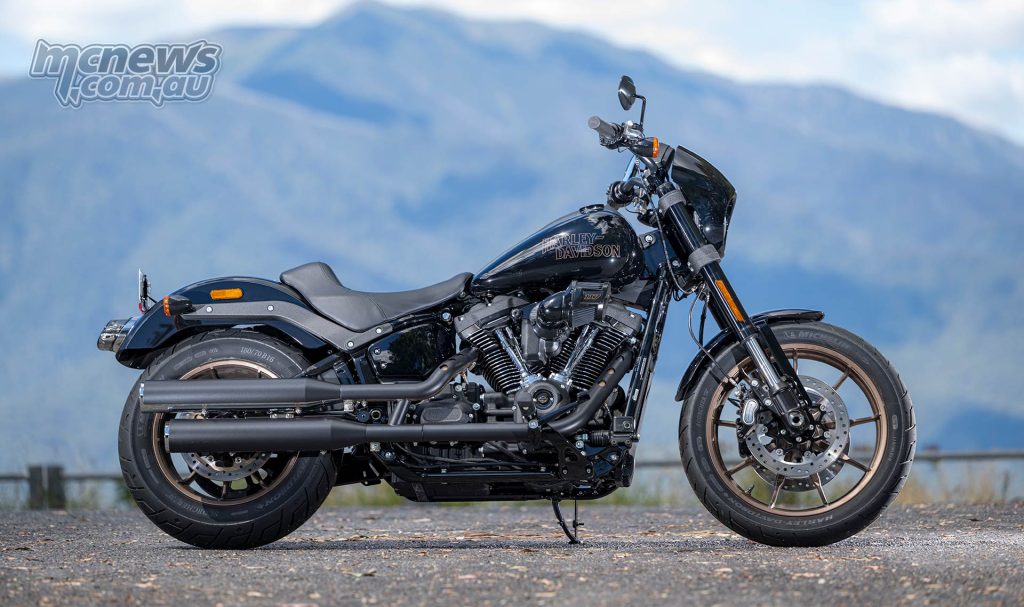
At $31,250 the 2022 Low Rider S is four-grand cheaper than the more touring oriented Low Rider ST. Both bikes share a fairly generous 19-litre fuel capacity but the ST scores rigid removeable saddle-bags and a large frame-mounted fairing inspired from the Sport Glide to add further touring amenity to the Low Rider package. This makes for a bagger, but in a smaller and lighter option than the traditional touring models. With a duck friendly seat height of just over 700 mm for either model that could be an attractive proposition for many.
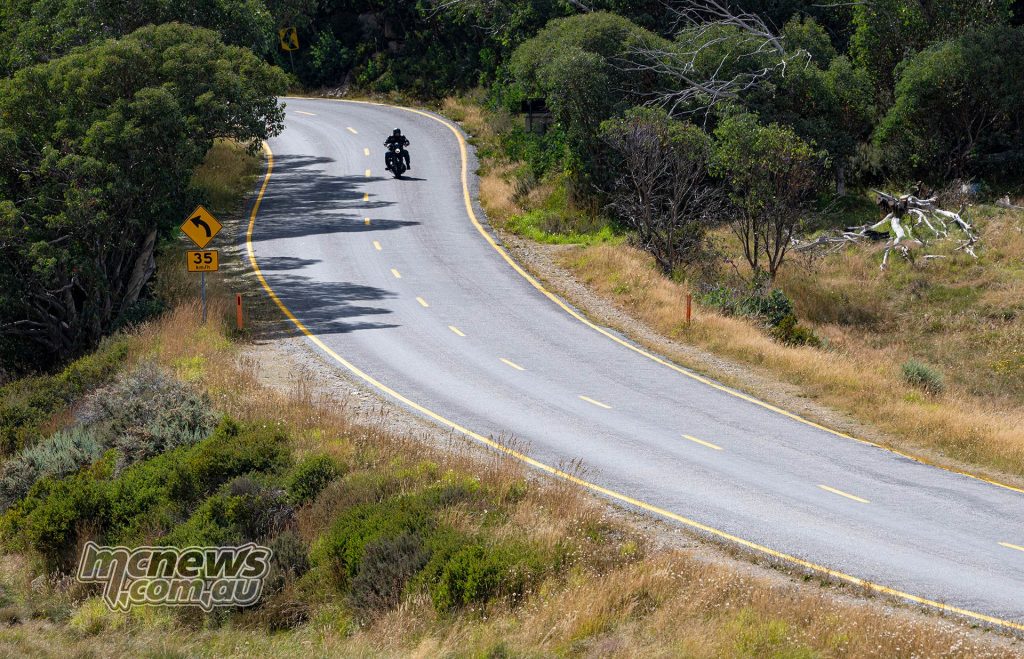
As it stands though, the Low Rider S as tested and pictured here can be ridden away for just over 31k, which makes it the most affordable way to get on a 117 cube Harley-Davidson model and one of the best handling bikes in the 2022 Harley range. Just because the mid-mount peg and low seat combination doesn’t work for me, doesn’t mean it won’t work for you. Try one on for size yourself at your local Harley dealer as it does have plenty going for it and is one of the nicest options in the current Harley catalogue.
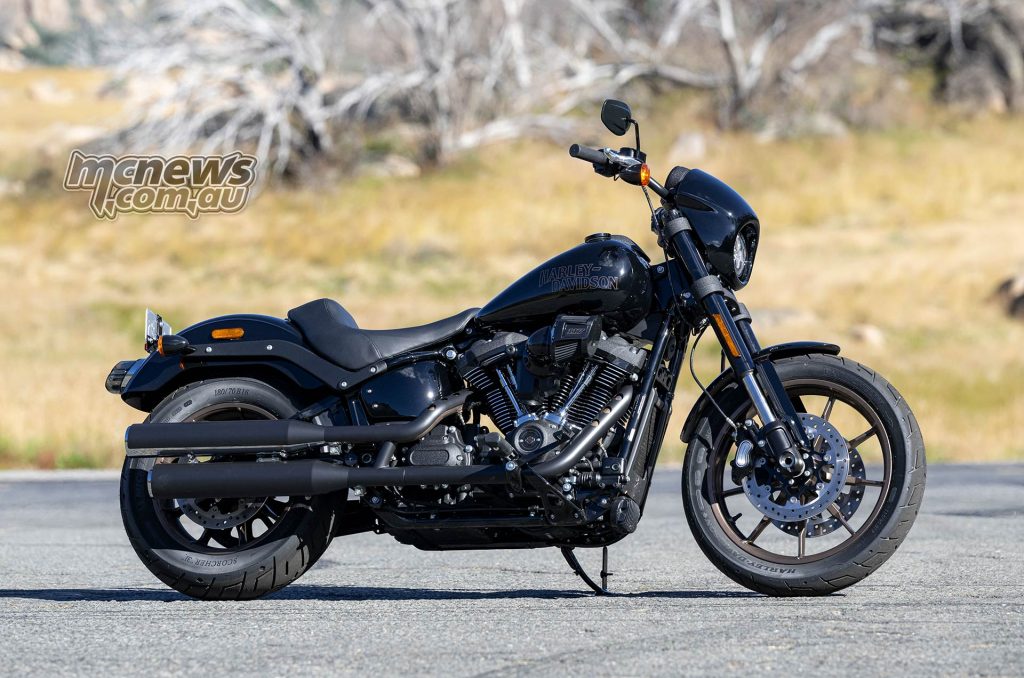
2022 Harley-Davidson Low Rider S Specifications
- Engine – Milwaukee-Eight 117, 1923 cc, pushrod OHV
- Bore x Stroke – 103.5 x 114.3 mm (4.075″ x 4.5″)
- Power – 103 hp (77 kW) at 4750 rpm
- Torque – 169 Nm (125 ft-lb) at 3500 rpm
- Compression Ratio – 10.2:1
- Induction – Electronic Sequential Port Fuel Injection (ESPFI)
- Intake – Heavy Breather intake with synthetic media, washable exposed element
- Exhaust – 2-into-2 offset shotgun; catalyst in muffler
- Lubrication – Pressurised dry sump with oil cooler, 4.7 litre oil capacity
- Primary Drive – Chain 34/46 ratio, 1.18 litre oil capacity
- Final Drive – Belt, 32/66 ratio
- Transmission – Six-speed Cruise Drive
- Clutch – Mechanical, 10 plate wet, assist & conventional
- Front Suspension – Single cartridge 43 mm inverted fork with aluminum triple clamps; triple rate springs, 130 mm travel
- Rear Suspension – Hidden, free piston, coil-over monoshock; 56 mm stroke; hydraulic preload adjustment, 112 mm travel
- Lean angle – 31.3 degrees
- Front Brakes – 4-piston fixed front calipers, 300 mm rotors
- Rear Brake – 2-piston floating caliper, 292 mm
- L x W x H – 2365 x 870 x 1195 mm
- Seat Height – 710 mm
- Ground Clearance – 145 mm
- Rake – 28 degrees
- Fork angle – 28 degree
- Trail – 145 mm
- Wheelbase – 1615 mm
- Tyres – 110/90-19 (F), 180/70-16 (R)
- Frame – Mild steel, tubular frame; rectangular section backbone; stamped, cast, and forged junctions; MIG welded; aluminum forged fender supports
- Swingarm – Mild steel, tubular sections, stamped x-member, forged axle junctions; MIG welded; removable belt spacer
- Fuel Capacity – 18.9 litres
- Weight – 308 kg
- Gross weight rating – 526 kg
- Warranty – 24 months
- RRP – From $31,250
